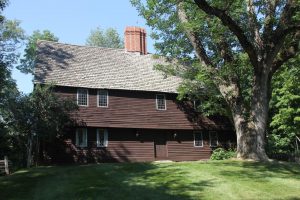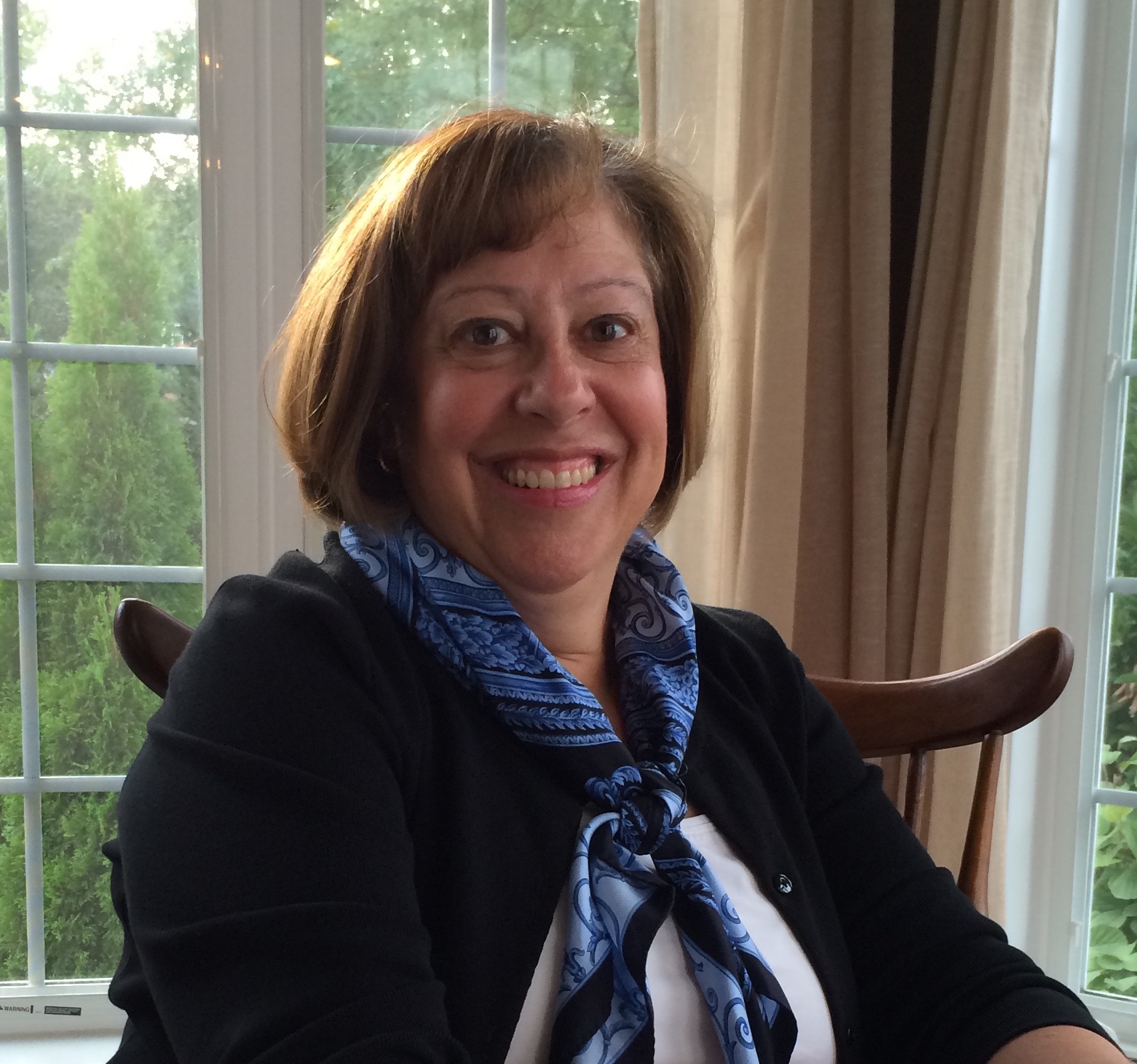 The Parson Capen House sits in the historic section of Topsfield, Massachusetts, a charming New England town about 30 miles north of Boston. It is quite remarkable that this minister’s home has survived nearly unchanged since the seventeenth century. Visitors can walk in the rooms where the Reverend Joseph Capen and his family lived, and where Parson Capen undoubtedly contemplated the fate of parishioners accused and convicted of practicing witchcraft during the Salem Witch Trials.
The Parson Capen House sits in the historic section of Topsfield, Massachusetts, a charming New England town about 30 miles north of Boston. It is quite remarkable that this minister’s home has survived nearly unchanged since the seventeenth century. Visitors can walk in the rooms where the Reverend Joseph Capen and his family lived, and where Parson Capen undoubtedly contemplated the fate of parishioners accused and convicted of practicing witchcraft during the Salem Witch Trials.
Joseph Capen was a young Harvard graduate when he came to Topsfield to lead the town’s congregation in 1682. Shortly thereafter, he built what is known today as the Parson Capen House. The date “July 8 1683” is written on a beam in the parlor, and the architecture – a fine example of the Elizabethan or English Cottage style – is indicative of the time period. It was a grand house for the time as evidenced by its size – not just the footprint, but also the fact that it is a two-story house. The house is one room deep with two stories plus an attic and a cellar. There are two rooms downstairs – the parlor and the hall – and two rooms upstairs – the chambers. A steep stairway leads to the upstairs chambers, but only the first floor is open for viewing.
Step into the parlor and into what would have been one of the larger rooms in the community in the late 1600s. The parlor was used for both private and public purposes, from entertaining to conducting parish and town business. The room has been restored with period pieces reflecting its many purposes. There is a bed in the corner along with a formal dining table and chairs in front of the large hearth. Across the entryway is the hall, the only other room on the first floor. This room was used as an everyday space for the family. There is a large hearth and a beehive oven. The hall has been restored to reflect the daily life of the family in the late 1600s.
Salem Witch Trials:
Joseph Capen served as minister of the Topsfield congregation for more than forty years, including the tragic years of the Salem witch hysteria. Three of Parson Capen’s parishioners were tried, convicted, and executed as witches. A stone memorial in Topsfield lists the victims as Mary Esty, Elizabeth How, and Sarah Wildes. All three were hung in 1692.
The story of Mary Esty (Estey, Easty) and her sister, Sarah Cloys (Cloyce, Cloyes, Clayes), is particularly significant for Parson Capen. Mary, Sarah, and their sister, Rebecca Nurse, were all accused of practicing witchcraft. Rebecca was found guilty and executed on 19 July 1692.
Pleading for their lives, Mary and Sarah presented a petition to the court that reads in part:
…Those who have had the Longest and best knowledge of us, being persons
of good report, may be suffered to Testifie upon oath what they
know concerning each of us, viz Mr. Capen the pastour and those of
the Towne & Church of Topsfield, who are ready to say somthing
which we hope may be looked upon, as very considerable in this
matter… [1]
We see from this petition that Parson Capen was willing to serve as a character witness for the sisters. The fact that Capen would come to the defense of the sisters against the rising tide of hysteria speaks to the character and strength of the man. Sadly, the petition did not save Mary. She was convicted of practicing witchcraft and executed on 22 September 1692.
Mary’s sister, Sarah, was accused of practicing witchcraft and imprisoned for months, but never convicted. Sarah’s indictments were ultimately dismissed.[2] Sarah and her husband fled to Danforth Farms (today the town of Framingham). They built their home there in 1693 on what is appropriately named Salem End Road.[3]
Three Sovereigns for Sarah (1985), a three-part mini-series, recounts the story of the three Towne sisters, Rebecca Nurse, Mary Esty, and Sarah Cloys.[4] The dialogue follows actual trial transcripts. The Parson Capen House was used in the filming of the series as the setting for the home of the Reverend Samuel Parris, the minister of the Salem parish at the center of the hysteria. Joseph Capen is not depicted in the film, but we know that he ultimately chose to support his parishioners. A decade after the Salem Witch Trials, Capen and several other ministers signed a petition to the court asking that the convictions of those accused be reversed.[5] As you tour the Parson Capen House, take a moment to imagine the minister’s anguish as he contemplated the fate of his parishioners during that tumultuous and dark period in our colonial history.
For more information on the Parson Capen House, please visit http://www.topsfieldhistory.org/parson_capen.shtml.
Notes
[1] Paul Boyer and Stephen Nissenbaum, eds., The Salem Witchcraft Papers, Volume 1: Verbatim Transcripts of The Legal Documents of The Salem Witchcraft Outbreak of 1692, partially revised, corrected, and augmented by Benjamin C. Ray and Tara S. Wood, 2011. Salem.lib.virginia.edu. Web. 2016. (Petition of Mary Easty and Sarah Cloyce)
[2] Ibid. (Indictment v. Sarah Cloyes, Nos. 1-3)
[3] Visit sarahclayeshouse.org for more information.
[4] Three Sovereigns for Sarah. Dir. Philip Leacock. 1985. PBS Home Video, 2005. DVD.
[5] Salem Witchcraft Papers. (Petition of Eleven Ministers from Essex County)
Share this:

About Marcia Young
Marcia Young grew up in Framingham, Massachusetts. She is a graduate of Georgetown University and Boston College Law School. She loves visiting house museums and exploring the stories they hold. Her first guidebook, Visit House Museums: Cape Cod, Martha’s Vineyard & Nantucket, is available on Amazon. She is currently working on a directory of Massachusetts house museums. For more information, visit her website at www.visithousemuseums.com.View all posts by Marcia Young →